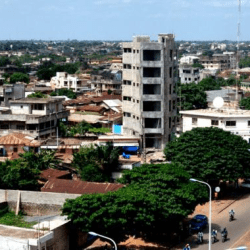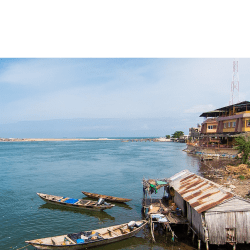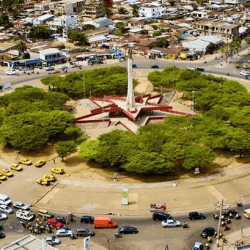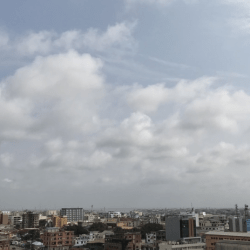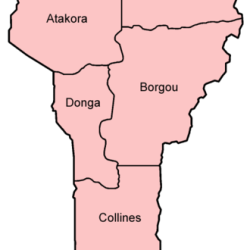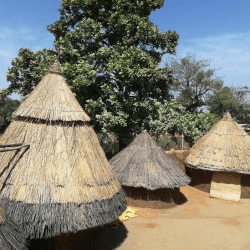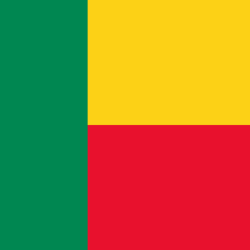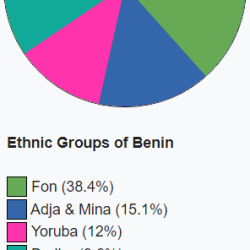Porto-Novo is the official capital of Benin Republic. The Beninese city serves as the political and administrative capital of the country.
Porto-Novo is located in the south of Benin, 13 km from the Atlantic Ocean.



Once called the Kingdom of Hogbonu, Porto-Novo has preserved its traces of the past, not only in the architectural and royal setting, but also in the economic framework of the country.
Porto-Novo is one of the most visited cities in Benin, and even one of the best tourist sites in West Africa.
Recently, its population has been numbered at about 300,000.
Being a city occupied by Westerners very early on, Porto-Novo is now known for its colonial buildings dating back centuries.
The reason why it preserves a prestigious architecture (one of the most preserved heritages in the world).
It is a place where you can find Afro-Brazilian religious building located in the middle of the city’s large market.
You can also find the old Alexandre Sènou Adandé Museum of Ethnography.
A site paying homage to Yoruba culture, it is the emblem between the Beninese government and its ethnic roots.
This place preserves all the relics that have marked the history of the city and its tribes.
Indeed, Porto Novo never ceases to surprise its visitors when it comes to tourist sites. It also offers travelers the opportunity to visit the Honmé Museum, the royal palace of King Toffa. The latter is a site museum holding around 230 objects kept in storage, including a relic of a royal court in great detail.
There is also the da Silva Museum, a place that collects more of the heritage of slavery, highlighting the links of the Beninese population with Brazil.
The history of the Porto-Novo dates back to the 15th century.
On the one hand, there is a word of mouth legend that spoke of a town founded by three ethnic Yoruba hunters of Nigerian origin. On the other hand, a legend tells the story of a town founded in the 15th century by Aja princes from West Africa, in a locality overflowing with fishermen on the shores of Lake Nokoué.
Hundreds of years passed, and it wasn’t until the 18th century, in 1724, that a new kingdom was born with the name “Hogbonu”. In the meantime, the city experienced strong economic growth thanks to its proximity to the Atlantic Ocean.
And at the same time, the city created a large boat dock to further promote trade with the Portuguese and the French.
Then, in 1730, the kingdom known as Hogbonu was replaced by Porto Novo (new port). A name given by a Portuguese called Eucharistus de Campos, only because the city is very similar to the Portuguese city of Porto.
At that time, the agglomeration became particularly wealthy due largely to the slave trade, a slave trade between European leaders (France and Portugal).
A market that consequently destroyed several thousand families in sub-Saharan Africa.
At the end of the 19th century, King Sodji, who was on the throne, signed a protectorate treaty with the West, especially the French.
20 years later, another form of compulsory protectorate was concluded with King Toffa I, incentivizing the entire city to be put to the benefit of the settlers. Thus was born the French colonial administration and the city became the capital of Benin.
CLIMATE
The city of Porto-Novo occupies a humid tropical climate. This type of climate is often referred to as a four-season equatorial climate, including two dry seasons (November to mid-March and mid-July to mid-September) and two wet seasons (mid-March to mid-July and mid-September to mid-November). The humidity is mostly at 75%, which is important for the city. Temperatures are mostly pleasant, ranging from 20°C to 32°C.
HOW TO GET THERE
Like all the other neighbouring towns in the south of Benin, Porto-Novo is also technically connected by road to the various countries in the surrounding area. You can go through Nigeria, Cotonou, it depends on yourself.
HOW TO GET AROUND
To get around the city of Porto-Novo, rest assured, there is nothing to worry about. Indeed, the city provides the population with different means of transport. What is similar in all the cities of Benin, buses, city taxis and motorcycles commonly known as “Zém” are used as means of transport. This public transport is very convenient for both the population and tourists.
THINGS TO DO IN PORTO-NOVO
- Take a look at the Honmé Museum and the da Silva Museum
- Explore the Alexandre Sènou Adandé Museum of Ethnography
- Visit the Songhai Center: a center for research, teaching and production in agriculture.
- Take a walk in the garden Place Jean Bayol
- Visit the Cathedral of Our Lady of the Immaculate Conception
Reference: voyage-benin.com/guide-benin/destination/porto-novo-vous-accueille

